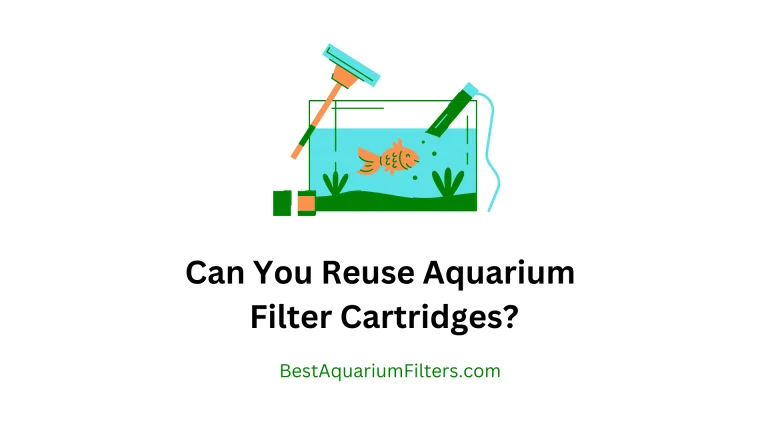How to Reduce Water Flow in Aquarium Filters?
Reducing water flow in an aquarium filter can be necessary, but the problem is many new fish keepers don’t know how to reduce water flow in aquarium filters.
Don’t worry! I will make it easy for you.
I will completely guide you how to adjust aquarium filter flow. So what are you waiting for? Let’s go.
How to reduce water flow in aquarium filters?
There are many different methods you can use to reduce water flow in an aquarium filter. Let’s explore each method in detail:
Adjustable Flow Feature:
Most new aquarium filters have a feature that lets you change how fast water flows through them. You can usually find a button or switch on the filter that you can move to make the water flow faster or slower. Just check the manual for your filter to see how to find and use this feature.
It’s the easiest way to control how much water moves through your aquarium filter. Some new fish keepers worry about the adjustable flow feature available in large turtle tanks. So yes, you will get this feature, so just make sure to buy a reliable turtle tank. If you’re interested in buying, check out the best turtle aquarium filters.
Baffle or Diffuser:
A baffle or diffuser is a tool that helps spread out the water flow from your filter. It’s useful because it makes the water movement gentler for your fish. You can buy these tools made specifically for aquariums or make your own using plastic bottles, filter sponges, or PVC pipes.
The goal is to attach the baffle or diffuser to the filter output to break up the flow and spread the water evenly in the tank, reducing strong currents.
Positioning the Outflow:
If you adjust the angle and direction of the filter’s outflow, you can have a significant impact on the water flow within your aquarium. This adjustment allows you to control the strength and spread of the water current.
For example, directing the outflow towards a wall or placing it behind decorations can help to disperse the flow and reduce its impact on the fish. Experiment with various positions until you find one that achieves the desired level of water movement without causing excessive turbulence.
Reducing Pump Power:
Some aquarium filters, particularly those with adjustable pumps, enable you to decrease the pump’s strength or speed. When you lower the pump power, the water circulates through the filter at a slower rate, leading to less water flow in the aquarium.
Nonetheless, it’s crucial to find a balance because setting the pump too low can impact the filter’s effectiveness. Refer to your filter’s manual for instructions on adjusting pump settings and keep a close eye on water quality after any modifications.
Using a Spray Bar:
Replacing the regular outlet in canister filters with a spray bar can improve water distribution in the tank. The spray bar divides the water flow into several streams, which reduces strong currents and creates smoother water movement.
You have to follow the manufacturer’s guidelines to install the spray bar correctly, and adjust its position to get the flow pattern you want in your aquarium.
Adding Filter Media:
Including extra filter media inside the filter chamber can decrease water flow as it goes through the filter. The added media increases resistance, which slows down the water movement in the system.
However, it’s important not to overcrowd the filter with media, as this can hinder filtration and cause clogging. Find a balance by adding an adequate amount of media to moderate flow without affecting the filter’s performance.
Installing a Valve:
If your filter system allows, you can add a valve to the tubing connected to the filter output. This valve lets you manually control the water flow, giving you the ability to adjust the flow rate whenever necessary.
By opening or closing the valve, you can manage how much water goes through the filter and fine-tune the water movement in your aquarium.
Using a Pre-Filter Sponge:
Adding a pre-filter sponge to your filter intake is a great way to decrease water flow. The sponge acts as a barrier, slowing down the water that enters the filter and decreasing the force of the output. Pre-filter sponges also capture larger debris, improving filtration and keeping the water cleaner.
Make sure to select a sponge size that fits your filter’s intake opening and secure it in place using the attachments or zip ties provided.
Important Considerations
1- Monitor Water Quality
Whenever you adjust your filter’s flow rate, keep a close eye on important water parameters like ammonia, nitrite, nitrate, and pH. This helps ensure that these levels stay within acceptable ranges for the health of your aquarium inhabitants.
2- Species Compatibility
Different fish species have different preferences when it comes to water flow. For example, bettas and certain types of catfish prefer calm waters with minimal flow. In contrast, species like goldfish and some cichlids can tolerate higher flow rates. When adjusting your filter’s flow rate, take into account the specific needs of your fish species:
Flow-Sensitive Species:
Flow-sensitive species like bettas, gouramis, and angelfish thrive in calmer waters. If you want to ensure their comfort and well-being, it’s important to lower the flow rate in your aquarium. Strong currents can stress these fish, impacting their behavior and overall health negatively.
Tolerant species:
Tolerant species like barbs, danios, and many cichlids can thrive in environments with higher flow rates. You can adjust the flow rate to create moderate to high water movement that suits these fish well. However, be careful not to create excessive turbulence, as this can still stress the fish and affect their comfort.
Watching your fish’s behavior is crucial in determining their comfort level with the current flow. If you notice signs of stress, such as erratic swimming or hiding, it could indicate that the flow rate is too strong for certain fish species.
Paying attention to these cues allows you to adjust the flow rate accordingly to create a more suitable environment for your fish.
3- Filter Maintenance
Regular maintenance of your aquarium filter is crucial to maintain optimal performance and water quality. Changes in flow rate, such as a decrease in water flow, can be an indicator that the filter needs cleaning or that the filter media requires replacement. Here are some maintenance tips to keep in mind:
Clean Filter Media:
Make sure to regularly clean aquarium filters to stop them from getting blocked and to keep water flowing smoothly. Rinse them in dechlorinated water or water from your aquarium to keep the good bacteria safe.
Replace Filter Media:
You should change your filter media when it’s worn out or not working well anymore. Follow the manufacturer’s advice on when to replace it to keep your water clean and flowing smoothly.
Check for Blockages:
Look for anything blocking your filter parts. Make sure there’s no debris slowing down the water flow, and check that everything is working right.
Monitor Pump Performance:
Keep an eye on how well your filter pump is working. Make sure it’s running smoothly, and check it regularly. Clean the pump intake to stop debris from building up and causing problems with water flow.
Conclusion
This article gave a detailed guide on how to reduce water flow in aquarium filters, offering helpful tips for fish owners. It explained different ways like using adjustable flow settings, adding baffles or diffusers, changing the outflow direction, lowering pump power, using spray bars, adding filter materials, installing valves, and using pre-filter sponges.
The article also stressed the importance of checking water quality, considering fish preferences, and regularly maintaining the filter. Overall, it provided practical advice for creating a healthy and comfortable environment for aquarium fish.






